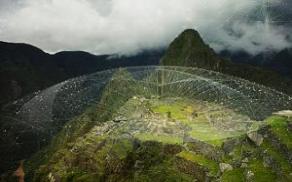
New blog design and Noosphere
This posting is celebrating the launch of the new design of the blog and website (the picture above is digital art of Tatiana Plakhova).
(the picture above is digital art of Tatiana Plakhova).
Just as there are the biosphere, developed over millions of years around the terrestrial sphere, according to Teilhard de Chardin, the man emerged as a single species in the biosphere on Earth, breathing in a atmosphere, but subject to a kingdom “neither more nor less than a “sphere” – the Noosphere (or sphere thinking) about coextensively imposed-on (but the more connected and homogeneous) the Biosphere “(Chardin, 1997, p. 102).
Chardin describes the development of the Noosphere in two phases one occupation Biosphere, extension or as he calls it, where “swells in the first half of the path (to the equator [he thinks the poles to the center]) … a very similar pace, proceeds historically the establishment of the Noosphere “(Chardin, 1997, p. 103), and only lately … appearing in the World is the first symptoms folding definitive and global mass thinking inside a hemispherical top … “(Chardin, 1997, p. 104) and says that the first phase had three distinct characteristics:” Settlement, Civilization, Individualization “(idem).
This movement of contraction, which he called “planetarization” in raises “a fear reflected essential element before a whole, apparently blind, whose immense layers bend over it as if to absorb much alive … as Life, after lead us by the hand into the light, it dropped back, exhausted? “(Chardin, 1997, p. 126).
“From this point of view … no room in the eyes that our fears of ‘dehumanization by planetarization’ are exaggerated, because that planetarization that both frightens us is no more (judging by its effects) that the authentic and direct continuation of the evolutionary process that historically came out type human zoo? (Chardin, 1997, p. 127).
Chardin reaffirms his certainty that the complex “economic, technical, scientific and social” … “Behaves like a body that radiates, irradiation being formed by a free energy, the nature and transformations must be the subject of a brief study” (Chardin, 1997, p. 130).
CHARDIN, Teilhard. O lugar do homem na natureza. Lisboa: Instituto Piaget , 1997.









